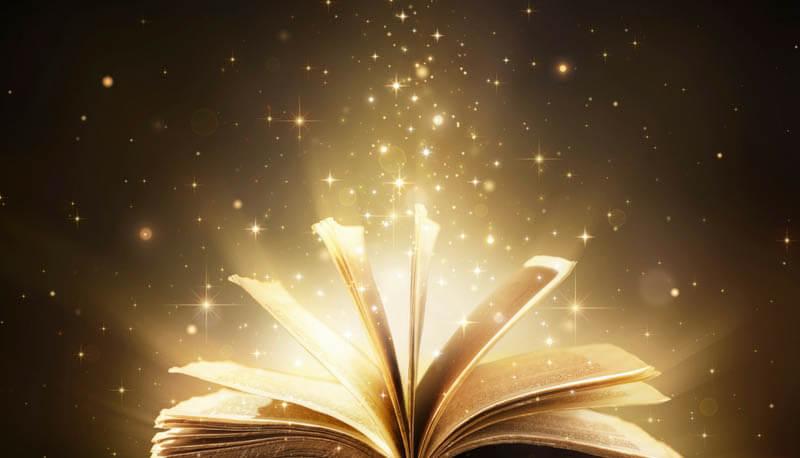Concetti Chiave
- Fantasy literature is characterized by magic, supernatural elements, and imaginary worlds, differentiating it from science fiction and horror.
- The genre has roots in ancient mythology, using gods and supernatural beings to explain natural phenomena and human qualities.
- Epic poems and legends, like Beowulf and the legend of King Arthur, contributed to the fantasy genre with elements such as witches and dragons.
- Modern fantasy masterpieces like "Lord of the Rings" and "Harry Potter" illustrate the genre's versatility, integrating real-world locations and diverse magical elements.
- Fantasy's enduring popularity is reflected in its success across various media, attracting audiences of all ages worldwide.
Fantasy literature is a literature genre usually characterized by magic, supernatural elements and imaginary worlds. Fantasy may be considered a subgenre of science fiction and horror although it lacks scientific themes; on the contrary, it abounds of magical animals such as dragons or werewolves and magical elements like wizards and fairies.
Indice
Origini mitologiche del fantasy
The origins of fantasy can be traced back to ancient mythology, whose goal was to explain to humans the workings of nature and mild their fear for the unknown. Usually, mythology tries to explain the rules of nature through the action of Gods or supernatural beings that, in general, tend to resemble human qualities. Gods are the maximum expression of the best and worst qualities of human beings: let’s think about Zeus, who is basically the stereotype of the average man, who wants to have fun and party all night, enjoy different beautiful female lovers and is quite ill-tempered. But Zeus has also one single characteristic that makes him unique: immortality. Such supernatural quality, typical of mythology in general, would become one of the elements of fantasy.
Elementi epici e leggendari
Fantasy is also rooted in epics and legends. The oldest surviving English epic poem, i.e. Beowulf, contains fantasy elements like witches, monsters, and dragons, and so does the legend of King Arthur. These elements kept on living also during the Middle Ages and the Renaissance (do you remember the typical, brave knight who fights a dragon to free the beautiful princess locked in a tower?), eventually absorbed in the fairy tales of the XVIII century.  Indeed, speaking animals and magic creatures are other common elements of fantasy: for example, the Wolf in Little Red Riding Hood, and the animals in Cinderella.
Indeed, speaking animals and magic creatures are other common elements of fantasy: for example, the Wolf in Little Red Riding Hood, and the animals in Cinderella.
Capolavori del XX-XXI secolo
The great fantasy masterpieces come all from the XX-XXI century. In the ’50, two of the most famous modern fantasy works were published, i.e. Lord of the Rings by J. R. R. Tolkien and The Chronicles of Narnia by C.S. Lewis. Later came also Neil Gaiman’s Stardust and American Gods. Finally, we can’t miss two other big hits in fantasy literature: Harry Potter by J.K. Rowling and Game of Thrones by G.R.R. Martin. All these examples show how fantasy can embrace different and various elements: for example, in Harry Potter and The Chronicles of Narnia not all locations are imagined, and some parts of the story are settled in real-world locations. Moreover, magic can assume different shapes, like a magic wand or a wicked ring, or dragons and direwolves.
Successo televisivo del fantasy
The television success reached by the works above shows how fantasy is still an appealing genre also in the modern world and is followed and loved by millions of people of all ages.
A cura di Suzy90.
Domande da interrogazione
- Quali sono le caratteristiche principali della letteratura fantasy?
- Quali sono le origini della letteratura fantasy?
- Quali sono alcuni dei capolavori della letteratura fantasy del XX-XXI secolo?
- Perché la letteratura fantasy è ancora popolare nel mondo moderno?
La letteratura fantasy è caratterizzata da elementi magici, soprannaturali e mondi immaginari, spesso popolati da animali magici come draghi e lupi mannari, e personaggi come maghi e fate.
Le origini della letteratura fantasy risalgono alla mitologia antica, che cercava di spiegare i fenomeni naturali attraverso l'azione di dei o esseri soprannaturali, e sono radicate anche in epiche e leggende come Beowulf e la leggenda di Re Artù.
Alcuni capolavori della letteratura fantasy del XX-XXI secolo includono "Il Signore degli Anelli" di J.R.R. Tolkien, "Le Cronache di Narnia" di C.S. Lewis, "Harry Potter" di J.K. Rowling e "Game of Thrones" di G.R.R. Martin.
La letteratura fantasy è ancora popolare nel mondo moderno perché continua ad affascinare e attrarre milioni di persone di tutte le età, come dimostrato dal successo televisivo delle opere menzionate.






 Accedi a tutti gli appunti
Accedi a tutti gli appunti
 Tutor AI: studia meglio e in meno tempo
Tutor AI: studia meglio e in meno tempo